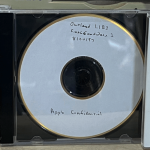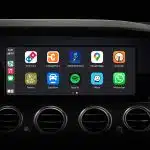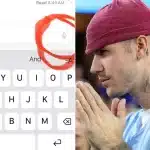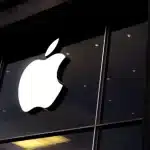The modern classroom isn’t just powered by textbooks and lecture halls anymore. Students are increasingly expected to adapt to digital environments that demand more than basic literacy. Skills like coding, content creation, and data fluency have become essential for thriving academically and professionally. For many, the journey begins when they decide to upgrade their toolkit and start treating technology as a career enabler rather than just a convenience. In this context, students often look for ways to balance coursework with skill development, which is where solutions to write my paper for me online can help streamline academic workloads. This allows them to devote more attention to mastering the digital skills that will define their futures.
The Growing Role of Tech Literacy in Student Life
Tech literacy is no longer optional. From programming small scripts to automate repetitive tasks to using content creation platforms for storytelling, students who are fluent in technology gain an edge in every discipline. Whether it’s humanities students visualizing historical data or business majors building analytical dashboards, the ability to leverage technology determines how effectively they can complete assignments, communicate ideas, and present research.

This literacy extends beyond the classroom. Internships, freelance projects, and part-time jobs increasingly require knowledge of software tools, basic coding, or content editing skills. Employers often view these as indicators of adaptability and problem-solving, which means learning these skills early sets students up for long-term success.
Coding as a Foundational Skill
Learning to code is often the first step toward building technical confidence. Even a basic understanding of programming languages like Python, JavaScript, or HTML opens up opportunities for automation, website building, or data analysis. Students who know how to code can create their own study tools, build personal websites to showcase portfolios, or even launch small entrepreneurial projects.
For instance, a student might write a script to collect and clean research data automatically rather than doing it manually, saving hours of work. Others might create interactive presentations or microsites for class projects, which not only impress instructors but also teach valuable real-world skills.
The key isn’t to become a professional developer overnight but to develop problem-solving habits through code. The habits of breaking down complex tasks, experimenting with solutions, and iterating translate well to all academic disciplines.
Content Creation: Communicating Through Modern Platforms
While coding builds technical logic, content creation builds communication power. Platforms like YouTube, Substack, Medium, and even TikTok are no longer just entertainment hubs; they are serious spaces for sharing knowledge, building audiences, and practicing persuasive communication.
Students who can write engaging articles, edit videos, or design visually appealing graphics have a powerful way to present their work to the world. For example, a history major could create short educational videos to explain historical events, while a science student might publish research breakdowns on a blog to reach wider audiences.
This isn’t limited to public platforms. Many academic projects now involve multimedia elements like podcasts, video presentations, and infographics, which require content creation skills. The ability to package information in a compelling format helps students stand out in competitive environments.
Bridging Coding and Content
The most empowered students are those who learn to combine technical and creative abilities. Coding enables them to build platforms, while content creation helps them populate those platforms with valuable information. A student who can design a simple website and fill it with high-quality educational content gains full control over their digital presence.
Consider a student journalist who learns HTML and CSS to customize a personal news blog. They can publish investigative pieces, incorporate interactive maps built with JavaScript, and use analytics to understand their audience. This combination mirrors real-world roles in tech journalism, UX writing, and digital marketing.
Similarly, students in STEM fields can use coding to visualize data and then present their findings through well-crafted videos or blog posts. This dual skill set makes them more versatile in both academic and professional contexts.
Tools That Support Skill Growth
Students don’t have to learn everything at once. There’s a wide range of beginner-friendly tools that make the learning curve smoother:
- Coding platforms: Codecademy, freeCodeCamp, Replit, and GitHub for collaboration and practice.
- Content creation tools: Canva for design, Notion for structured writing, OBS Studio for recording, and CapCut or DaVinci Resolve for video editing.
- Publishing platforms: WordPress, Medium, and Ghost for hosting written work or multimedia projects.
- Automation tools: Zapier and Make (formerly Integromat) to integrate apps and streamline tasks.
Many students find that by automating small processes, like formatting citations or organizing research files, they free up mental energy for the creative aspects of their work. Academic support platforms like WritePaper also help students manage heavy workloads efficiently, giving them time to focus on acquiring these modern skills.
Real-World Applications and Career Benefits
Developing tech skills isn’t just about improving grades. Students who can code and create content simultaneously open doors to internships, freelancing, and entrepreneurial ventures. For example:
- Freelancing, offering web design, copywriting, or content editing services to local businesses or online clients.
- Internships to apply to positions in marketing, product development, or research that require both analytical and communication skills.
- Launch side projects, like a podcast, educational channel, or online publication to build a personal brand.
- Research support to build tools that automate literature collection, data processing, or citation management.
Employers increasingly value these hybrid profiles because they signal initiative, self-learning ability, and versatility, which are highly sought after in dynamic work environments.
Building a Future-Ready Skillset
Students often underestimate how quickly these skills can compound over time. Starting with a single coding course or a simple blog can lead to significant opportunities within months. Consistency matters more than intensity. Regular practice, experimentation, and sharing work publicly gradually build both competence and confidence.
Peer learning is another underrated strategy. Joining coding clubs, content creation circles, or open-source communities allows students to learn collaboratively, receive feedback, and stay motivated. These communities often mirror professional networks, making the transition from campus to career smoother.
Conclusion
The path from coding to content creation represents more than just picking up new abilities. It’s about developing a mindset that blends logic, creativity, and communication. Students who invest in these skills equip themselves to navigate academic challenges more efficiently, present their ideas compellingly, and seize opportunities in a digital-first world. By strategically managing their time and resources, they can focus on growth areas that truly set them apart.












